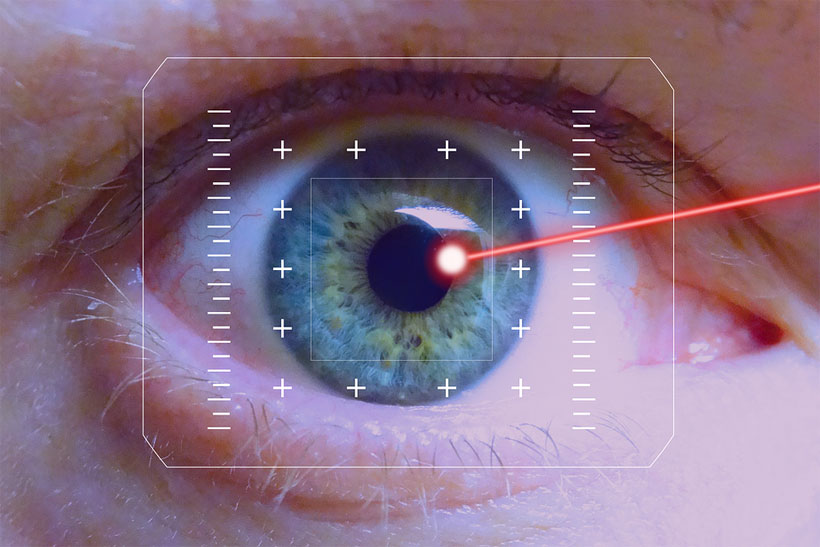- Like
- SHARE
- Digg
- Del
- Tumblr
- VKontakte
- Flattr
- Buffer
- Love This
- Save
- Odnoklassniki
- Meneame
- Blogger
- Amazon
- Yahoo Mail
- Gmail
- AOL
- Newsvine
- HackerNews
- Evernote
- MySpace
- Mail.ru
- Viadeo
- Line
- Comments
- Yummly
- SMS
- Viber
- Telegram
- JOIN
- Skype
- Facebook Messenger
- Kakao
- LiveJournal
- Yammer
- Edgar
- Fintel
- Mix
- Instapaper
- Copy Link

Glasses and contact lenses are dependable ways of dealing with poor vision, including blurry vision at far, near, and middle distances, but they come with some significant drawbacks. Glasses can interfere with your comfort and certain day-to-day activities, and contact lenses frequently need to be replaced (and taken in and out). One alternative to these prescription lenses is undergoing LASIK eye surgery, which relies on a laser-based procedure to correct your vision permanently.
But is this the best way to improve your eyesight?
The Basics of LASIK
LASIK stands for laser-assisted in-situ keratomileusis, so you can see why people prefer to use the term “LASIK.” There are several varieties and methods of laser refractive surgery, but LASIK is the best known, the best performing, and is therefore the most common; accordingly, many laser refractive surgeries are known informally as LASIK, though this isn’t entirely accurate.
Improper vision is the result of some inability to focus light on the back of the eye. If your eyeball is longer than normal or if your cornea curves sharply, you’ll be able to see nearby objects closely, but far objects will be blurry. If you shave a shorter eyeball or a flat cornea, the opposite will be true; near objects will be blurry, but far objects may be clear.
LASIK works by reshaping the curvature of your cornea, so these problems no longer exist. Before a procedure, your doctor will carefully measure your eye and decide the best way to reshape it. During the procedure, they’ll use a specialized cutting laser to remove corneal tissue, flattening or curving it accordingly.
Is LASIK for Everyone?
LASIK procedures are best applied to healthy people with healthy eyes, whose biggest eye health problem is poor vision within a normal range of error. There are several factors that could prevent you from being a good candidate for a LASIK procedure, including:
- An existing eye disease. If you have an underlying disease that makes your eyesight get progressively worse, LASIK may not be able to help you. Some other diseases, like herpes simplex, uveitis, and keratitis, may also affect your eyes.
- Eye injuries or lid disorders. If you’ve had severe eye injuries in the past or if you currently have a lid disorder, it could make surgery inadvisable.
- Chronically dry eyes. LASIK has a chance to make your eyes dryer than usual, so if you already have dry eyes, it could make the situation worse.
- Large pupils.Abnormally large pupils could lead you to symptoms like light halos, glare, or star bursts, especially in darkness.
- Glaucoma or cataracts.If you have glaucoma, LASIK could increase your eye pressure, making the condition worse. If you have cataracts, LASIK may not fully improve your vision.
- Abnormally bad vision.LASIK is best for moderately bad vision. If your prescription is too severe, it may not restore your vision to normal.
- Abnormally good vision.If you already see pretty well without corrective lenses, LASIK may be unwise to pursue.
- Sporting and/or career involvement.The procedure can make your eyes more sensitive, making it difficult to participate in contact sports or in certain types of careers.
The Costs
One of the few downsides of LASIK surgery is the cost. Though prices will vary depending on where you go and what specific type of procedure you’re undergoing, you can expect to pay between $300 and $2,400 per eye treated with the procedure. That’s significantly more than you’ll pay for contact lenses or glasses, though it will be permanent.
Are There Any Complications?
Though LASIK is generally considered safe and many patients see exceptional long-term improvements to their vision, there are some complications that could develop. In the weeks following your procedure, you may experience temporary side effects, such as:
- Blurry vision. Hazy or blurry vision at certain distances may set in as your eye adjusts.
- Night vision problems.You may struggle to see certain things at night, or see halos around lights in the dark.
- Dry or itchy eyes.As your eyes heal, they may feel dry, scratchy, or otherwise unpleasant.
- Light sensitivity.Some patients may experience increased sensitivity to light, feeling discomfort or pain in the presence of especially bright or a sudden influx of light.
- Discomfort or pain.You may also experience some degree of discomfort or pain in and around your eyes.
Though rare, some patients may experience these symptoms indefinitely as a result of the procedure.
The Bottom Line
If you’re interested in getting LASIK surgery, make sure to talk to your doctor about your current fitness for the procedure, the risks, the costs, and possible alternatives. While LASIK is a safe, permanent vision improvement for many people, it isn’t a good procedure for every patient, and there are some risks even in a perfectly controlled environment.
About Shannon Clark
Shannon holds a degree in Exercise Science and is a certified personal trainer and fitness writer with over 10 years of industry experience.

